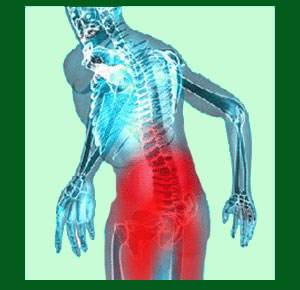
Spondylolisthesis paralysis is one of the worst possible consequences of vertebral migration. Paralysis can occur when the spinal cord or nerves are damaged. While paralysis remains the least often seen negative collateral effect of listhesis, there is still a very real risk in cases of severe vertebral slippage, particularly in the neck region.
Paralysis is a threat that hangs over many dorsalgia patients’ heads. Often, doctors have fostered the fear of spinal cord injury in an effort to gain compliance for dramatic and invasive surgical prescriptions. In most cases, the actual threat of paralysis is virtually nonexistent. However, in some instances of vertebral listhesis, the danger of suffering neurological loss is very real, although still uncommon.
This essay delves into the chance of suffering paralysis as a result of spondylolisthesis. We will discuss lumbar and cervical vertebral migration and the specific risks presented by each location of listhesis.
Cervical Spondylolisthesis Paralysis
Cervical spondylolisthesis presents the greatest risk of causing paralysis of all vertebral migration issues in the human spine. The cervical spine features the spinal cord running though a relatively narrow central vertebral canal, as well as spinal nerve roots exiting bilaterally at each vertebral level through the neural foramen. When severe cervical listhesis occurs, it can misalign both the central and neuroforaminal canal spaces.
Grade 3 and grade 4 spondylolisthesis will significantly impact the patency of the neurological canals. Since it is virtually universal for adults to also demonstrate other stenosis-producing conditions in the neck, such as disc degeneration and herniation, osteoarthritic accumulation and changes in cervical lordosis, the chances of suffering significant spinal cord or spinal nerve encroachment are quite likely.
If the cervical spinal cord is compressed, a condition of tetraplegia might result. This condition might be partial or complete. Affected anatomical processes can include all sensory, motor and even autonomic functions below the compressed cord level.
If a spinal nerve is compressed, then the patient might suffer deficits in motor and sensory function in specific areas of the body which will no longer be properly innervated, such as the neck, shoulders, arms and/or hands.
Lumbar Paralysis
In the lumbar spine, the spinal cord ends around L1 to L2 in most typical anatomies. However, the cauda equina still continues to occupy the central vertebral canal and can be subject to compression in the same manner as the spinal cord. Continued impingement of the cauda equina by a misaligned central canal can enact cauda equina syndrome and subsequent paralysis. Resulting consequences will be a partial or complete paraplegic condition in the lower body beneath the level of nerve compression.
Since the degenerative processes are universal in the lumbar spine, the addition of degenerative disc disease, herniated discs, changes in lumbar lordosis and osteoarthritic activity will all contribute to reduce the size of the central canal and aid in stenosis that can facilitate paralysis.
Singular nerve roots can also suffer damage due to compression in the central or neuroforaminal spaces. The consequences of this will be a compressive neuropathy that may eventually result in paralyzing neurological deficits in the innervated areas of the buttocks, legs and/or feet.
Spondylolisthesis Paralysis Statistics
Very few cases of spondylolisthesis result in any form of paralysis for several major reasons:
Most listhesis is low grade and asymptomatic. Few cases will progress to the grade 3 or 4 classifications needed to create pain and neurological symptoms, and even fewer will advance to threaten paralysis.
In cases where severe listhesis does create a danger of paralysis, medical providers will recognize the threat and intervene with surgical treatment to restore the anatomy of the spine and the patency of the neurological canals using spinal fusion with the possible addition of other procedural options, such as laminectomy, foraminotomy, corpectomy or spinal implant placement.
The majority of cases of spondylolisthesis paralysis we have seen fall into one of 2 possible categories. The first includes cases of sudden onset, extreme listhesis enacted by massive trauma, such as a serious motor vehicle collision, in combination with pre-existing vertebral migration. The results can be immediate and paralyzing if the spinal cord is injured or the spinal nerves damaged. The second profile of listhesis-related paralysis is just as heartbreaking and consists of patients in underserved medical serve countries. The poor worldwide often have to face the consequences of disease, injury and degeneration, such as spondylolisthesis, without any help whatsoever. In extreme cases, this neglect can result in complete paralysis and even premature death.
Spondylolisthesis > Consequences of Spondylolisthesis > Spondylolisthesis Paralysis



